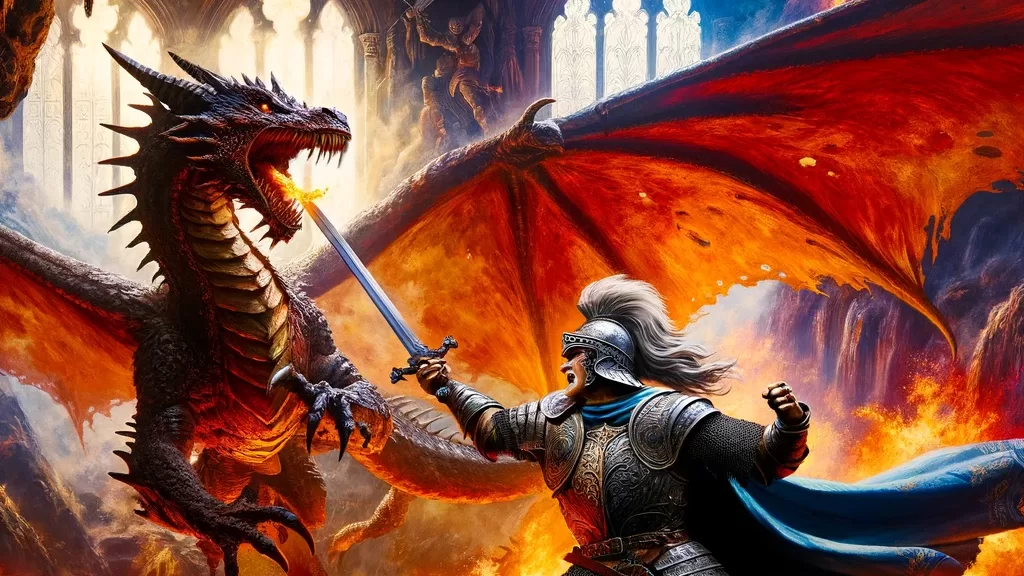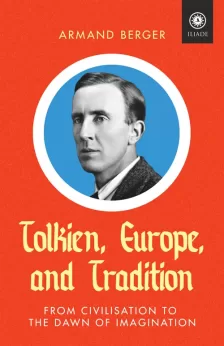Tolkien was someone concerned with the great European mythologies, of which he had an intimate knowledge due to his academic training. His sensibilities, determined by his unexpected and happy encounters, made him turn to the traditions of Northwest Europe: Celtic, Finnish, and German-Scandinavian.
Let us look at Celtic first. The res celtica is tricky to understand. It is not uniform, and is stretched out over time — several centuries — and over space, be it geographical or linguistic. Tolkien developed a particular interest in Welsh material. He read carefully the Mabinogion text, a compendium in prose of four legendary stories written in Middle Welsh and compiled between the 12th and 13th centuries, from which we sometimes find influences in Tolkien. His Celtic tropism also led him to survey the Breton lays, of which Marie de France is the worthy inheritor.1 Thus, inspired by this style, he wrote The Lay of Aotrou and Itroun, first in 1930, and then a second version in 1941–1942. He also wrote the poem ‘Imram’, published in 1955, which draws on the Irish tradition of initiatory journeys, and which is based on the most famous of them, The Voyage of Saint Brendan.
We must still mention, in relation to Celtic material, the interesting comparison between Tolkien’s Elves and the Tuatha Dé Danann of Irish mythology. Using the theories of Georges Dumézil, as applied to the Celts by Françoise Le Roux and Christian-Joseph Guyonvarc’h, while studying Celtic civilisation — of a social, military, religious or even magical nature — through mythological texts, one can draw fruitful parallels with the stories of Middle-earth. One thinks of Valinor, the Undying Lands depicted in The Silmarillion, which recall Tír na nÓg, the Celtic paradise. Tolkien, too, rearranged the Arthurian material that he knew so well — notably through Sir Gawain and the Green Knight — in an alliterative poem published a few years ago: The Fall of Arthur.2
Now on to Finnish. The material from Finland was gathered by Lönnrot in the 19th century in a collection called the Kalevala. The work appears to be comprised of texts from various sources. There are myths, legends, hero stories, epics, and even lyrical stories. The traditional background is Finno-Ugric, and the composite story addresses the classic themes of pre-Christian traditions, such as the metamorphosis of animals into human beings, the appearance of monsters, and the evocation of magic. It also tells the story of a sacred object with immense powers, the sampo, and of heroes who set out in search of it, a quest for power but also for meaning. The Kalevala is, in many ways, a reflection on power, one that resembles the quest of the Silmarils or that of the Ring in Tolkien.
Tolkien was inspired by the Kalevala tradition in several respects. In particular, the story of Kullervo, a tragic hero, influenced him. Between 1912 and 1916, he composed a rewriting of this narrative. This material, which he liked so much, would be used in the history of Túrin Turambar as it appears in The Silmarillion, as well as in his development of The Children of Húrin.
And finally German-Scandinavian. It goes without saying that it is to this tradition that the most beautiful part belongs. The res germanica is omnipresent in Tolkien’s work and it would be futile to attempt to speak on it exhaustively here.3 However, let us offer in this little booklet several Germanic insights that highlight this importance.
One of these works, after all, left a strong impression on Tolkien: the Völsunga saga, probably written around 1260 in Iceland. The narrative draws the main elements of its history from the Eddas, from the heroic poems, the contents of which the Völsunga reworks in prose form. The Norse text was similarly inspired by songs that are lost, and reported events that are not an integral part of the cycle of primitive legends. Somewhere between continuity of tradition and literary invention, this masterpiece is a privileged testimony to the mythology of ancient Scandinavians, as well as a text of primary importance for the study of the Nibelungen epic.
The saga is a strange and glorious tale. Tolkien wrote that the Völsunga ‘tells of the oldest of treasure hunts: the quest of the red gold of Andvari, the dwarf. It tells of the brave Sigurd Fafnirsbane, who was cursed by the possession of this gold, who, in spite of his greatness, had no happiness from his love for Brynhild’.4 Tolkien, as we mentioned above, discovered this story in Lang’s children’s books. In the same 1911 paper cited above, he said that ‘[i]t shows us the highest epic genius struggling out of savagery into complete and conscious humanity. Though inferior to Homer in most respects, though as a whole the Northern epic has not the charm and delight of the Southern, yet in a certain bare veracity it excels it, and also in the story of the Volsungs in the handling of the love interest.’5
(Translated by Jason Rogers)
Footnotes
Trans. Note: Marie de France’s work, twelve short narrative poems, referred to as ‘lays’, were written in Anglo-Norman French, likely in the 12th century.
Trans. Note: Tolkien’s The Fall of Arthur was published posthumously in 2013.
See Rudolf Simek, Mittelerde: Tolkien und die germanische Mythologie, C. H. Beck, 2005. See also Armand Berger, ‘Tolkien le philologue et la res germanica’, J. R. R. Tolkien, Nouvelle École, no. 70, 2021, pp. 15–31.
From a paper read to the Literary Society on the Norse Sagas on 17 February 1911; a summary of which was published in the King Edward’s School Chronicle in March 1911. Citation available here.
Trans. note: Ibid.










